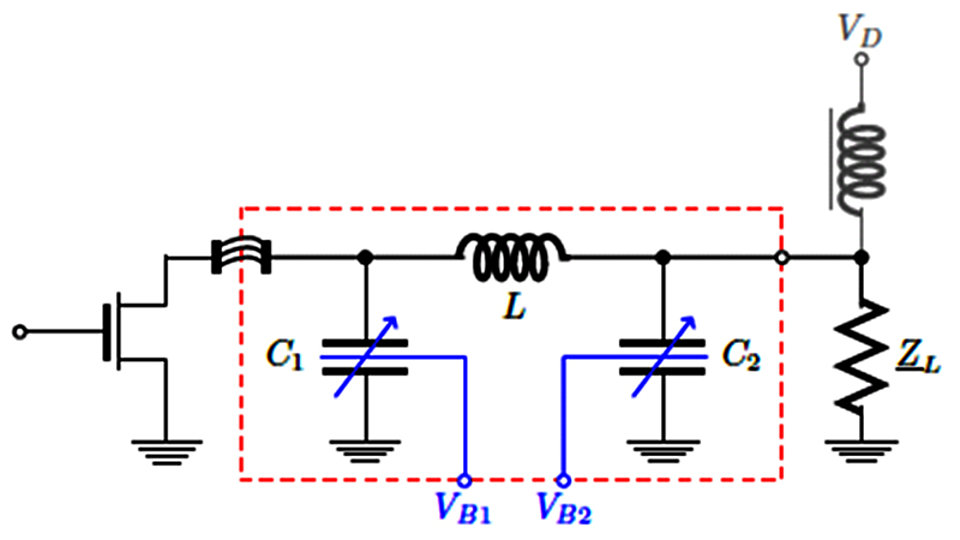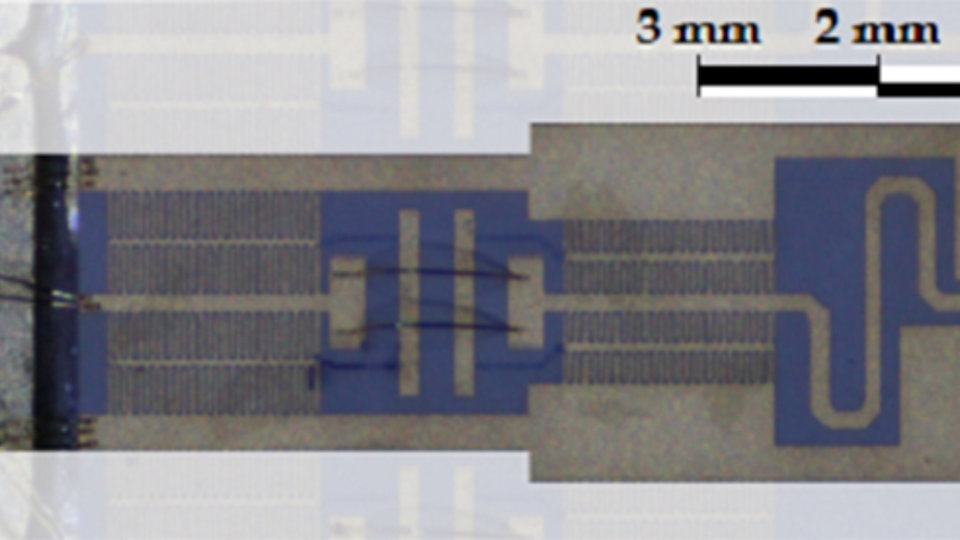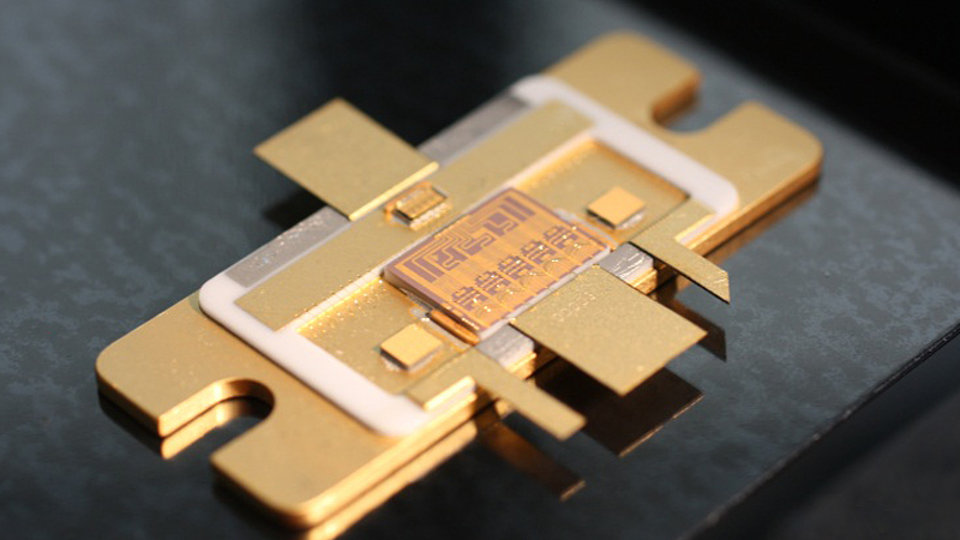Discrete tunable pre-matching GaN-BST transistors
Fig. 2: Tunable assembly with GaN transistor (l.) and impedance matching network (r.) - a single transistor cell is highlighted.
In the present smart phone era, the border between wireless computer communication, WLAN and WiMAX, and cellular systems like UMTS and LTE is vanishing. This places high demands on future mobile communication infrastructure that does not only have to work with multiple communication standards but also with signals spread over frequency bands covering the full 0.5...6 GHz range. For base-station suppliers tunability may be one alternative to reduce development time and costs. Tunability has, so far, mostly been implemented with tunable matching network designs based on diode varactors or MEMS structures using traditional discrete transistors. Now, Ferdinand-Braun-Institut together with the Technische Universität Darmstadt is developing a novel discrete tunable pre-matching RF-power transistor. It consists of a GaN HEMT combined with Barium-Strontium-Titanate tunable pre-matching networks (TpM), integrated into a single package. This solution enables pre-matched discrete RF-power transistors that can be tuned for multi-band operation, improved in-band performance, and allows for improved back-off efficiency through load modulation.
The principle is shown in Fig. 1 where a π-topology network has been integrated with the output of the transistor. The network is realized on a single BST ceramic substrate with the capacitors C1 and C2 being voltage-tunable planar interdigital BST varactors and L being an inductor realized by two 1 mm long 25 mm thick bond wires in parallel. The tuning voltage of the varactor is decoupled using anti-series varactor pairs and high resistance bias lines. Fig. 2 shows the realized tunable transistor assembly for a single cell and Fig. 3 depicts the realized configuration for a discrete load-tunable 5-cell powerbar.
As a novel technology, there are still many issues to solve. The near future work is focusing on decreasing the losses and improving the temperature stability, tunability, and package integration of the BST varactors.
Publication:
O. Bengtsson, H. Maune, F. Gölden, S. Chevtchenko, M. Sazegar, P. Kurpas, A. Wiens, R. Jakoby, and W. Heinrich, "Discrete Tunable RF-Power GaN-BST Transistors", 42nd European Microwave Conf. (EuMC 2012), Amsterdam, The Netherlands, Oct. 28 - Nov. 2, pp. 703-706 (2012).
FBH research: 08.02.2013


